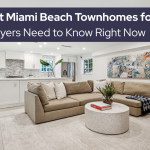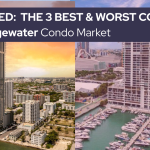
- Best of All
- Best Miami Luxury Condos
- Most popular
- Relocating to Miami
- Private Schools
- Investments
- Gated communities
- Waterfront information
- Luxury homes
- Luxury Condos
- New Construction Condos in South Florida
- Independent Pre-Construction condo reviews for Miami
- Independent Pre-Construction condo reviews for Fort Lauderdale
Never Buy these 5 Types of Homes in Miami
5 Tips to Avoid Real Estate Mistakes in Miami
Are you considering purchasing a new Miami home? Before you make a decision, it’s crucial to know which types of properties to avoid. In this article, we’ll explore the five types of homes you should never buy to prevent costly mistakes. From homes that tend to decrease in value to properties that present significant challenges, we’ll guide you through the pitfalls of buying a house. Stay informed and protect your investment by understanding which types of Miami homes to steer clear of, ensuring you make a wise choice in today’s dynamic real estate market.
1. Flipped Homes with Cosmetic Fixes
Flipped homes can appear to be fantastic bargains with their shiny new kitchens, updated bathrooms, and trendy finishes. However, don’t let the polished exterior trick you. In Miami, many flipped properties prioritize cosmetic upgrades to catch buyers’ eyes, often overlooking critical issues like plumbing, electrical systems, and structural integrity. It’s also important to pay attention to the kitchen’s quality. Some suppliers may offer cabinets and countertops that look high-end but don’t deliver on durability or craftsmanship.
Why It’s a Problem:
Tip:
Before buying a flipped home, consider hiring a reputable home inspector to identify any hidden problems that might be concealed by the renovations. Be cautious of homes where the updates were completed unusually quickly. Always verify whether all work was completed with the proper permits. Always request permits and plans to ensure that square footage and spaces are accurate and that nothing is misrepresented or poorly described. Many flipped properties are listed by inexperienced realtors from brokerages that do not thoroughly scrutinize their listing details. While many buyers focus on the visual appeal, it’s easy to overlook hidden issues like subpar subflooring, faulty wiring, or other shortcuts that were taken to save money. One of my clients is currently dealing with this, and it’s a nightmare—termites, poor flooring, bad wiring, and even mold hidden behind cosmetic fixes. Be especially cautious with flipped homes, as they’re often renovated quickly for fast cash. Additionally, partner with an experienced realtor who has evaluated thousands of homes. A knowledgeable realtor can differentiate between quality finishes and quick, superficial upgrades. Give me a call, and I can look into the home for you and come take a closer look.
2. Family Homes on Busy Streets
For many homebuyers in Miami, living in a quiet, family-friendly neighborhood is ideal. However, a home located on a busy street can come with a range of challenges, even if the property itself appears perfect.
Why It’s a Problem:
While homes on busy streets may seem like a more affordable option, they come with trade-offs in terms of noise, safety, and resale value. The constant traffic noise can be really frustrating, especially during Miami’s busy tourist season. If you have young children or pets, the increased traffic raises safety concerns too.
Additionally, homes on busy streets usually have lower resale values compared to those on quieter streets, which can make selling more challenging down the line. Many buyers prefer peaceful environments, and heavy traffic can be a major dealbreaker for them.
Tip:
Homes on busy streets generally have a limited value ceiling, often selling for about 30% less than similar properties in quieter cul-de-sacs or dead-end streets. This can be a significant drawback for families looking to buy. When considering a home, visit the area at different times of day to gauge noise levels and traffic. If you’re looking for a family home, prioritize properties on quieter streets or cul-de-sacs for better safety and long-term value. While you might find cheaper land lots in these areas, what seems like a bargain can quickly become costly. It’s important to do the math and recognize that you may not achieve the maximum value for homes in these locations. Building on the right lot can increase your profits if done correctly, but it can also backfire if not approached with care.

3. Homes in Flood Zones
Why It’s a Problem:
Properties in flood-prone areas typically have high insurance premiums and the constant risk of water damage, especially during hurricane season. Even if you have flood insurance, you could still encounter hefty repair bills, disrupted living situations, and possible declines in property value if flooding happens frequently. Plus, with climate change and rising sea levels, some flood zones are becoming increasingly vulnerable over time.
Tip:
Before buying a home, it’s important to check if it’s in a flood zone by using FEMA’s Flood Maps or consulting local real estate experts. If the property is in a flood zone, ensure it has sufficient flood protection measures, like raised foundations or storm-proofing, and consider the cost of flood insurance in your budget. Verify the elevation levels and request an elevation certificate. Utilize the FIU storm surge simulator to assess potential risks. If you want to live near the water, opt for a newer home and steer clear of older properties.
For more information on the risks of homes or condos in flood zones please click here
4. Bigger, Older Homes with Major Maintenance Needs
Tip:
5. The Most Expensive Home in the Neighborhood
Why It’s a Problem:
Tip:
Conclusion
Miami’s real estate market presents many opportunities, but it’s crucial to steer clear of properties that may turn into bad investments. Flipped homes with only superficial upgrades, homes on busy streets, properties in flood-prone areas, larger older homes that require extensive maintenance, and the most expensive homes in the neighborhood all come with significant risks that can affect your finances and quality of life.
To ensure a wise investment, always conduct thorough research, hire qualified professionals to evaluate the property, and consider how the home aligns with your long-term lifestyle and financial goals. By avoiding these high-risk property types, you can make more informed decisions and safeguard your investment in Miami’s dynamic real estate market.
Schedule a Meeting with David (Via Call, Zoom or in Person)
FAQ
These are the most commonly asked Google Real Estate Related questions
1. What are the Current Best New Condos in Miami?
If you want to hear in more details our opinions on the best new Miami new construction condos. Please read this article:Best New Construction Condos 2022-2023.
2. What is the best New Construction Condo in Fort Lauderdale?
In our opinion, the Residences at Pier Sixty-six are certainly the most interesting and unique. Already well underway this 32 Acre project will be home to the first of its kind Marina where owners will be able to anchor up vessels up to a staggering 400 ft! For specifics of this project see our independent review of this project.
3. How can I compare the new luxury construction Condos to the best existing Luxury Condos in Miami?
Our Best Luxury Condos in Miami article will prove to be very useful to those looking to compare the existing to the new. You may also want to watch this video which shows the performance of the best Condos in Miami over the last 15 years!
Please fill in your details and David Siddons will contact you
- Get our Newsletter
- Subscribe
- No Thanks
Get the latest news from Miami Real Estate News
Edit Search
Recomend this to a friend, just enter their email below.
 COMPARE WITH CONDOGEEKS
COMPARE WITH CONDOGEEKS







































